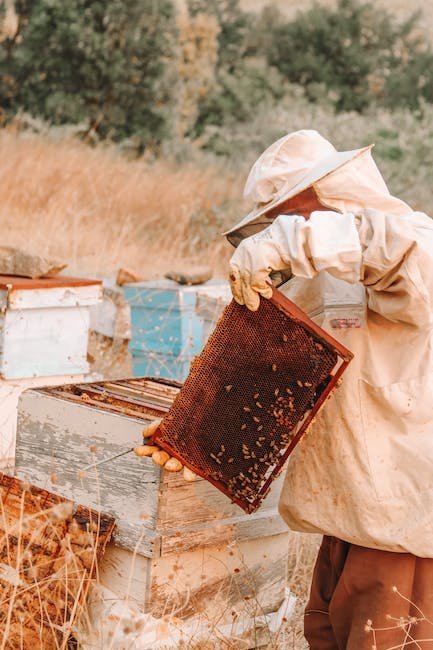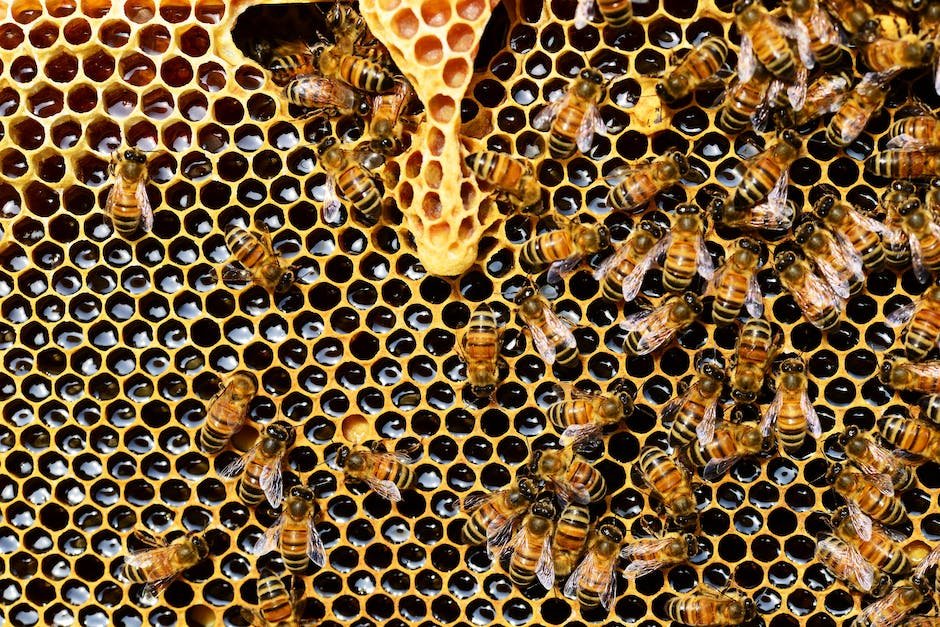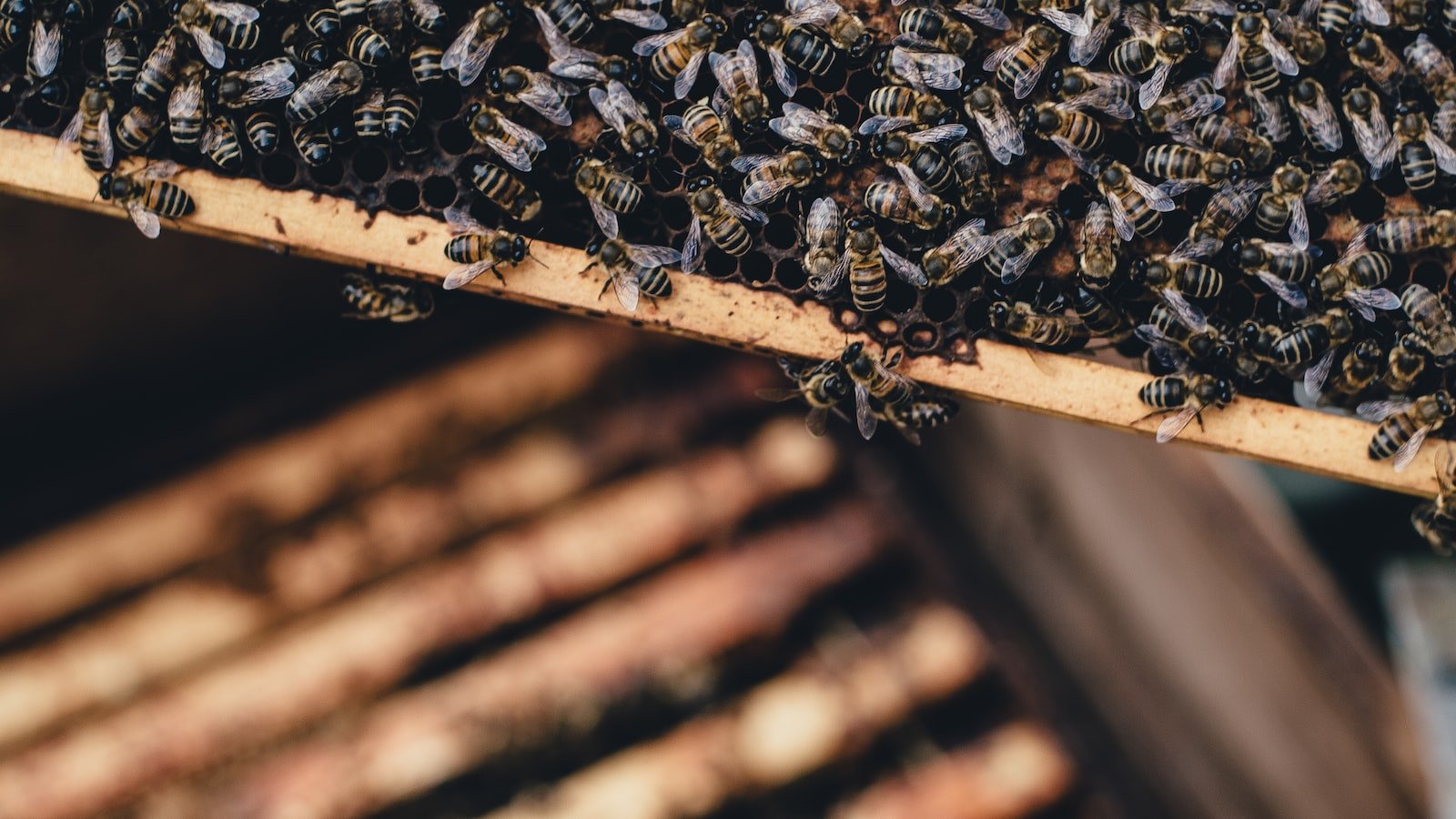Huddled within the rhythmic hum of nature’s rhythm lies the fascinating world of apiculture, where beekeepers embark on a delicate dance with these industrious creatures. As guardians of the hive, one crucial responsibility is to ensure their tiny tenants are nourished, fostering a bountiful and thriving colony. Enter the hive feeder, a marvel of apicultural innovation, designed to provide sustenance to our buzzing allies. In this guide, we will delve into the enchanting realm of hive feeders, exploring their diverse types and unraveling precious tips on how to use them effectively. Whether you have just embarked on your journey as a beekeeper or are seeking ways to enhance your hive’s health, join us as we unlock the secrets to harnessing the power of hive feeders for the benefit of both bees and their dedicated custodians.
Table of Contents
- Introduction: Understanding the Importance of Hive Feeders in Beekeeping
- Different Types of Hive Feeders and Their Characteristics
- Tips for Selecting and Installing Hive Feeders
- Proper Feeding Techniques to Maximize Bee Colony Health
- Key Considerations for Maintaining Hive Feeders Effectively
- Q&A
- Wrapping Up

Introduction: Understanding the Importance of Hive Feeders in Beekeeping
Beekeeping is not just a hobby; it is an essential practice that supports the ecosystem and ensures a healthy population of bees. Hive feeders play a crucial role in this delicate balance, providing bees with the necessary nutrition to thrive and produce honey.
Why are hive feeders important?
1. Nutritional support: Bees need a consistent supply of food to sustain their hives. Hive feeders act as a lifeline, especially during times when natural sources may be scarce.
2. Colony growth: Adequate nutrition promotes colony growth and expansion. Hive feeders offer a controlled and accessible source of food, allowing the bee population to flourish.
3. Honey production: Bees utilize the nutrition from hive feeders to produce honey, a valuable resource for beekeepers and a natural sweetener for humans.
Types of hive feeders:
1. Top feeders: Placed directly above the hive’s inner cover, they have a large capacity and are convenient for beekeepers to refill.
2. Boardman feeders: Attached to the hive’s entrance, they are easily accessible and suitable for small-scale beekeeping.
3. Frame feeders: Inserted into the hive, they have a high capacity and provide a more controlled feeding option.
Understanding the importance of hive feeders is vital not only for the survival of bee colonies but also for the sustainability of our environment. By providing a reliable food source, beekeepers contribute to the health and well-being of these incredible pollinators.

Different Types of Hive Feeders and Their Characteristics
In the world of beekeeping, hive feeders play a crucial role in providing nourishment to the bees and sustaining their colony. Let’s take a closer look at the various types of hive feeders available and their unique characteristics:
1. Boardman Feeder: This popular and simple feeder is placed directly on the hive entrance. It consists of a small plastic or wooden tray with multiple holes on the top. Bees access the sugar syrup through these holes, providing a quick and easy solution for beekeepers to feed their colonies.
2. Division Board Feeder: Designed to fit within the hive itself, this feeder is placed between frames in the brood chamber. It is typically made of wood or plastic and features a reservoir area where sugar syrup can be poured. The bees access the syrup through notches in the feeder, ensuring a steady supply of food for the colony.
3. Frame Feeder: As the name suggests, this feeder is integrated directly into a beehive frame. It provides an internal feeding option that minimizes disturbances to the bees. The feeder usually consists of a shallow plastic or wooden tray placed within a frame, making it easy to fill and monitor the syrup levels.
Each type of feeder has its benefits and considerations, depending on the beekeeper’s preferences and the needs of the colony. By exploring these various hive feeders, beekeepers can choose the most suitable option to ensure their bees thrive and establish a strong, healthy hive.
Tips for Selecting and Installing Hive Feeders
When it comes to the health and productivity of your bee colony, selecting and installing hive feeders is a crucial task. These feeders provide necessary nutrition to the bees when natural food sources are scarce. To ensure you make the right choices, follow these helpful tips:
- Consider the type of feeder: There are various types of hive feeders available, including boardman, entrance, top, and division board feeders. Each type has its own advantages and disadvantages, so think about the specific needs of your colony before making a decision.
- Opt for high-quality materials: Hive feeders are exposed to harsh environmental conditions, so it’s important to choose feeders made from durable materials like food-grade plastic or stainless steel. This ensures longevity and prevents the risk of contamination.
- Ensure proper installation: Proper installation is essential for the success of your hive feeders. Carefully read the manufacturer’s instructions and follow them step by step. Additionally, ensure the feeder is securely attached to the hive to prevent any leaks or unwanted access by pests.
By following these tips, you can select and install hive feeders that will provide your bees with the nourishment they need, ultimately promoting a thriving and productive colony.
Proper Feeding Techniques to Maximize Bee Colony Health
Feeding techniques play a crucial role in ensuring the health and productivity of bee colonies. By providing bees with proper nutrition, beekeepers can help them thrive and overcome challenges they may face. Here are some key techniques that can be employed to maximize bee colony health:
- Strategic pollen supplementation: Pollen is a vital source of protein for bees, essential for brood development and overall colony strength. Supplementing natural pollen sources during periods of scarcity can help maintain a healthy bee population. Beekeepers can offer pollen patties or powder, carefully placed near the brood nest, ensuring easy access for worker bees.
- Balanced sugar syrup supplementation: Providing bees with a balanced sugar syrup can help sustain them during times when natural nectar is limited. A mixture of granulated sugar and water at the appropriate ratio (typically 1:1 or 2:1) should be prepared and fed using hive-top feeders or frame feeders. Regular monitoring and refill are essential to avoid starvation and maintain colony strength.
- Mineral and vitamin supplements: Just like humans, bees require essential minerals and vitamins to maintain optimal health. Beekeepers can provide mineral-rich supplements like sea salt or specific mineral mixes, ensuring access to clean water through shallow trays or water stations with floating pieces of wood or plants for the bees to land on and drink.
- Feeding during dearth periods: In times of nectar dearth or seasonal changes, it is crucial to step in and support the colonies. Beekeepers can utilize feeding stimulants like lemongrass oil or essential oil patties placed in the hive to encourage foraging and boost colony activity during these challenging periods.
Beekeepers who master proper feeding techniques not only help their bee colonies survive but also contribute to the overall well-being of the pollinator population. By carefully considering the nutritional needs of bees and applying these techniques, beekeepers become guardians of bee health, ensuring the sustainability and productivity of these remarkable insects.
Key Considerations for Maintaining Hive Feeders Effectively
Buying the Right Hive Feeders:
When maintaining hive feeders, it’s crucial to ensure that you have the right equipment to support your bees’ nourishment. Consider purchasing hive feeders that are compatible with your hive type and size. Look for feeders made from durable materials such as plastic or glass which will be easy to clean and inspect for any signs of damage or contamination.
Regular Inspection and Cleaning:
To maintain hive feeders effectively, regular inspection and cleaning are essential. Inspect the feeders for any leaks, cracks, or clogs that could hinder proper feeding. Clean the feeders thoroughly, removing any residual food or debris, as it can attract pests and potentially harm your bees. Regular cleaning will help ensure a healthy feeding environment for your hive.
Monitoring Food Supply:
Monitoring the food supply in your hive feeders is vital for the well-being of your bees. Regularly check the feeders to ensure a continuous and adequate food supply. Keep a record of the feeding schedule and evaluate the consumption rate to ensure your bees are receiving the nutrients they need. In times of high demand, it may be necessary to replenish the feeders more frequently.
Protecting from Pests:
Pests can pose a threat to hive feeders, potentially contaminating the food or causing damage. Take necessary precautions to protect your feeders from pests by utilizing appropriate strategies such as screened hive entrance reducers or using ant moats to deter ants. Regularly inspect the area surrounding the feeders for any signs of pests and take immediate action if necessary.
Considering Weather Conditions:
Weather conditions can have a significant impact on hive feeders and their maintenance. Adjust the feeder placement according to the prevailing weather conditions, ensuring they are sheltered from excessive sunlight or heavy rainfall. Consider using protective covers or feeding options designed for specific weather conditions to prevent spoilage of food and water.
Evaluating Feeding Efficiency:
Regularly assess the feeding efficiency of hive feeders to gauge their effectiveness. Keep records of consumption rates and observe the behavior and health of your bees throughout the feeding period. Evaluate the overall impact of the feeders on the hive’s productivity and make necessary adjustments or improvements based on your findings.
Seeking Professional Guidance:
If you are uncertain or facing challenges in maintaining hive feeders effectively, do not hesitate to seek guidance from a professional beekeeper or an experienced beekeeping association. Their expertise and advice can help you overcome any hurdles and ensure your hive feeders are functioning optimally.
Q&A
Q: What are hive feeders and why are they important?
A: Hive feeders are specialized tools used by beekeepers to provide nutrition to their bees when natural nectar sources are scarce. They help ensure the survival of the colony during times of limited forage.
Q: What are the different types of hive feeders available?
A: There are primarily three types of hive feeders: top feeders, frame feeders, and entrance feeders. Each type has its advantages and suitability depending on the beekeeper’s preferences and the specific needs of the colony.
Q: How do top feeders work?
A: Top feeders are placed directly on top of the hive, allowing bees easy access to syrup or liquid feed. They typically have a reservoir and floating platform that prevents drowning while providing a convenient feeding solution for the bees.
Q: What are the benefits of frame feeders?
A: Frame feeders are inserted into the hive, replacing a frame temporarily. This ensures efficient feeding as bees can access the feed directly within the hive, mimicking natural feeding conditions and reducing the risk of attracting pests.
Q: Are entrance feeders a good option for beginners?
A: Yes, entrance feeders are often a popular choice for beginners due to their simplicity. They are placed near the entrance of the hive, allowing bees easy access to the feed. However, they may require more frequent refilling compared to other types.
Q: What are some general tips for using hive feeders effectively?
A: It is important to choose the appropriate type of feeder for your hive and regularly monitor the feed levels to avoid starvation or excess feeding. Additionally, ensuring proper hygiene by cleaning and sanitizing the feeders between uses is crucial for the overall health of the colony.
Q: When should hive feeders be used?
A: Hive feeders should be used during periods of food scarcity, such as the winter months or when there is a lack of natural nectar sources available to the bees. They can also be employed to stimulate brood production or encourage honey production during specific times.
Q: Can hive feeders attract unwanted pests?
A: Yes, hive feeders can attract pests like ants, bees from other hives, or even wasps. To minimize this risk, it is advisable to use feeders with built-in mechanisms that deter pests, such as bee-proof grids or moats to repel ants.
Q: How often should the feeder be refilled?
A: The frequency of refilling depends on several factors, such as the size and strength of the colony, the weather conditions, and the amount of feed provided. Regularly checking the feeder and refilling it as needed is crucial to ensure the bees have a continuous supply of nutrition.
Wrapping Up
As the bustling hive whispers its gratitude, we bid farewell to our exploration of the fascinating world of hive feeders. Like tiny wings fluttering in unison, we have unveiled the diverse array of feeder types, each playing its essential role in sustaining the thriving honeybee community. From the gentle buzz of the Boardman feeder to the dynamic dance of the division board feeder, we hope to have sparked your curiosity and empowered your journey as a conscientious beekeeper.
As you venture into this symbiotic partnership with nature’s tireless pollinators, remember to embrace the inherent marvel of hive feeders. These ingenious tools are not mere vessels dispensing sustenance, but rather intricate conduits fostering connections between the hive and its caretaker. Your role as a beekeeper merges with the rhythm of the hive, harmonizing in a delicate melody of support and nurture.
While we have unveiled the realm of various feeder types, let us not forget the nourishment of knowledge. Seek wisdom from your fellow beekeepers, consult reputable sources, and engage in the vibrant community that passionately protects and cherishes these tiny yet mighty insects. The hive is not just a collection of bees; it embodies resilience, cooperation, and the transcendence of individuality for the greater good.
As we conclude this chapter on hive feeders, it is our sincere hope that you embark on this enchanting journey with a newfound appreciation and fascination for the world of honeybees. Let us remember to tread with respect, safeguarding the delicate balance of nature as these mystical creatures bustling with golden essence continue their ceaseless dance.
May your hives thrive with abundance, your bees flourish in harmony, and your soul be forever intertwined with the ever-giving spirit of the hive. Farewell, dear reader, may your path be forever illuminated by the enchanting wonders of honeybees and their exquisite hive feeders.
As an affiliate, my content may feature links to products I personally use and recommend. By taking action, like subscribing or making a purchase, you’ll be supporting my work and fueling my taco cravings at the same time. Win-win, right?
Want to read more? Check out our Affiliate Disclosure page.